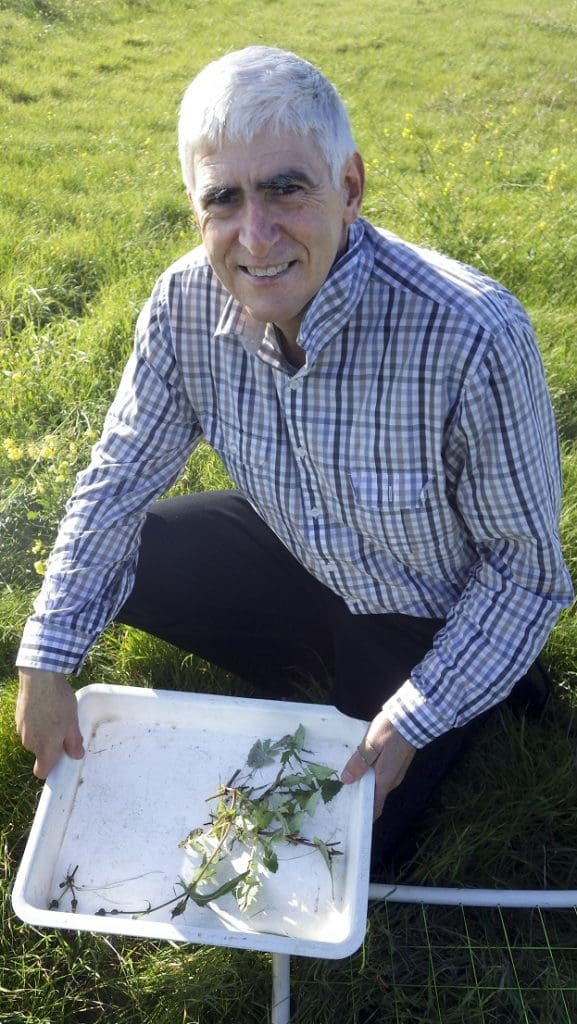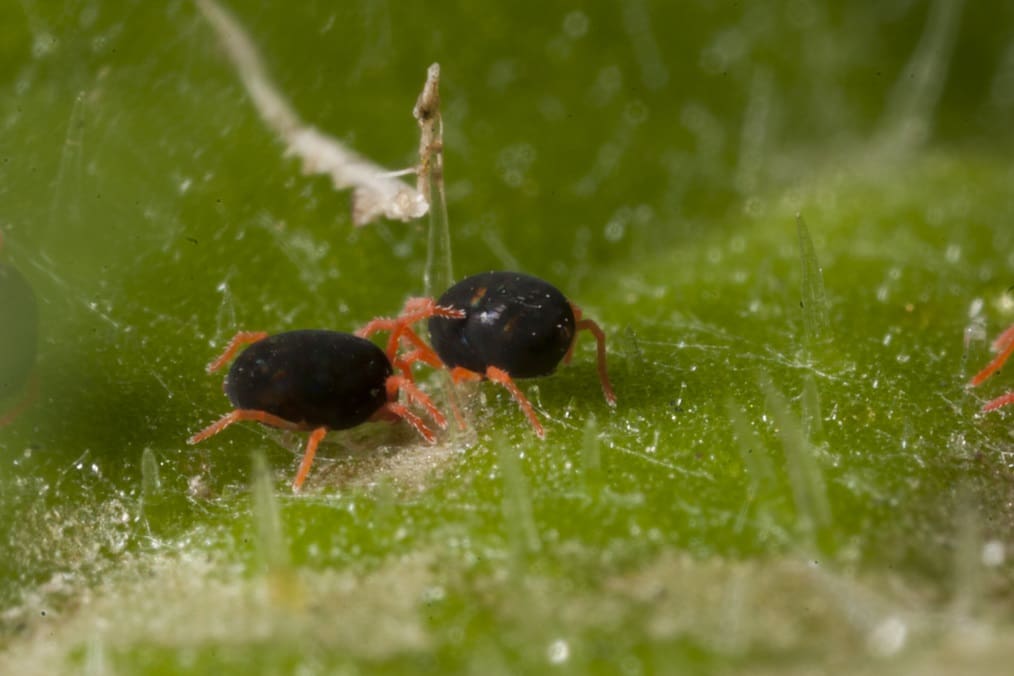GROWERS in southern New South Wales are being advised to monitor for redlegged earth mites (RLEM) this winter, with experts warning environmental conditions have been ideal for mass hatchings, potentially putting emerging winter crops at risk.
Dr Garry McDonald from cesar and the University of Melbourne said rain in some southern regions followed by cooler conditions in May had been conducive to population increases of the pest, which could affect canola, lupins, cereals and legume seedings, as well as pastures.
“RLEM, or Halotydeus destructor, only hatch in autumn under specific conditions, like those we had in May where areas received at least five millimetres of rain accumulated over five consecutive days or less, followed by 10 days of average daily temperatures below 16°C,” he said.
“Our predictive modelling suggests the peak egg hatch would have occurred in mid-May in areas like Wagga Wagga and Albury. But as most growers would be aware, the juvenile mites are microscopic so we wouldn’t expect them to have noticed much RLEM activity until early to mid-June.
“So, the time to monitor crops, and where necessary enact management strategies for RLEM, is now.”
RLEM is traditionally active from autumn until mid-spring across southern NSW, with pest hatching often coinciding with crop emergence.
Dr McDonald said the pest feeds on the crop causing silvering or white discoloration of leaves and distortion or shrivelling in severe infestations.

Rainfall and temperature combine to regulate RLEM egg development and hatchings. Dr Garry McDonald has discovered that the triggers in the western region appear different to those in the southeast.
“Affected seedlings can die at emergence with high mite populations. Feeding symptoms can also be mistaken for frost damage. RLEM have been found to be directly responsible for a reduction in pasture palatability,” he said.
RLEM are approximately 1mm in length with a velvety black body and eight orange-red coloured legs.
They can often be found on the leaf surface in feeding aggregations, of up to 30 individuals. In the warmer part of the day, they tend to gather at the base of plants, sheltering in leaf sheaths and under debris.
“Growers should be regularly monitoring crops. Mites are best detected feeding on the leaves in the morning or on overcast days. If mites are not observed on plant material, inspect soil for mites,” Dr McDonald said.
He said the economic thresholds for mites were:
- Wheat/barley: 50 mites per 100cm²
- Canola/linseed: 10 mites per 100cm²
- Pulses: 50 mites per 100cm²
- Establishing annual medic pastures: 20-30 mites per 100cm²
“More recently, a threshold for canola of 10 mites per plant at the late cotyledon-first true leaf stage has been developed,” he said.
Dr Paul Umina from cesar said RLEM were commonly controlled using insecticides, however, non-chemical options were becoming increasingly important due to evidence of resistance and concerns about long-term sustainability.
“Insecticide resistance in the RLEM is now present in the southern cropping region, so chemical stewardship is vitally important.”
He said for growers that meant not using the same chemical groups across successive spray windows (or across multiple generations of mites) and reserving co-formulations (or chemical mixtures) for situations where damaging levels of pests are present, and a single active ingredient was unlikely to provide adequate control.
“Border spraying can be an effective way to control mites, as mites will often move in from crop edges and roadside vegetation. During spring, carefully timed spraying using the TIMERITE® strategy will reduce mite populations the following autumn, but could also exacerbate other mite problems.”
Dr Umina also encouraged growers to adopt an integrated approach to mite management such as leaving native vegetation shelterbelts or refuges between paddocks to maintain populations of natural enemies like snout predatory mites.
Source: GRDC
An insecticide resistance management strategy has recently been developed for RLEM. Growers and advisors are encouraged to become familiar with strategy, which is available for download at: https://ipmguidelinesforgrains.com.au/ipm-information/resistance-management-strategies/
Growers and advisers can also access a service to determine if RLEM populations within their paddocks are resistant to insecticides. This service is being made available through a Grains Research and Development Corporation (GRDC) investment. Knowing the resistance status will assist in implementing appropriate and effective management.
For more information contact about the resistance testing contact: Dr Paul Umina, (03) 9349 4723 or [email protected]
For more information go to: http://cesaraustralia.com/sustainable-agriculture/pestnotes/insect/Redlegged-earth-mite
Grain Central: Get our free daily cropping news straight to your inbox – Click here




HAVE YOUR SAY